Bookshelves
-
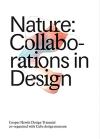
Nature: Collaborations in Design: Cooper Hewitt Design Triennial
Matilda McQuaid
How designers are collaborating with scientists and ultimately with nature itself
Designers today are striving to transform our relationship with the natural world. Although humans are intrinsically linked to nature, our actions have frayed this relationship, forcing designers to think more intentionally and to consider the impact of every design decision, from an artifact’s manufacture and use to its obsolescence. As a result, designers are aligning with biologists, engineers, agriculturists, environmentalists and many other specialists to design a more harmonious and regenerative future. Based on these new partnerships, designers are asking different questions and anticipating future challenges, which not only change the design process, but also what design means.
Nature: Collaborations in Design―companion to an exhibition titled Nature―Cooper Hewitt Design Triennial, Co-organized with Cube design museum―includes over 65 international projects from the fields of architecture, product design, landscape design, fashion, interactive and communication design, and material research. More than 300 compelling and exquisite photographs, illustrations and content from data visualizations illustrate seven essays, which explain and explore designers’ strategies around understanding, simulating, salvaging, facilitating, augmenting, remediating and nurturing nature. Four conversations between scientists and designers delve into topics related to synthetic biology, scientific versus design lexicon and recent shifts in the meaning of nature with a glossary illuminating scientific, technological and theoretical concepts and processes invoked by the designers.
Projects include DnA_Design and Architecture’s Bamboo Theater; Open Agriculture Initiative’s Personal Food Computers; Warka Water’s Warka Water Tower; Sam Van Aken’s Tree of 40 Fruit; the ODIN’s DIY Bacterial Gene Engineering CRISPR Kit; Michael Strano and Sheila Kennedy’s Nanobionic Light-Emitting Plants; MASS Design Group’s Rwanda Institute for Conservation Agriculture; Stamen Design’s Metagenomic Data Visualization for the Banfield Lab; Modern Meadow’s Zoa; Cave Architects’ Anthropocene Museum and Kim Albrecht’s Visualizing the Cosmic Web. -
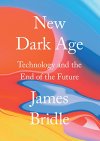
New Dark Age: Technology and the End of the Future
James Bridle
**“New Dark Age is among the most unsettling and illuminating books I’ve read about the Internet, which is to say that it is among the most unsettling and illuminating books I’ve read about contemporary life.” –* New Yorker
As the world around us increases in technological complexity, our understanding of it diminishes. Underlying this trend is a single idea: the belief that our existence is understandable through computation, and more data is enough to help us build a better world.
In reality, we are lost in a sea of information, increasingly divided by fundamentalism, simplistic narratives, conspiracy theories, and post-factual politics. Meanwhile, those in power use our lack of understanding to further their own interests. Despite the apparent accessibility of information, we’re living in a new Dark Age.
From rogue financial systems to shopping algorithms, from artificial intelligence to state secrecy, we no longer understand how our world is governed or presented to us. The media is filled with unverifiable speculation, much of it generated by anonymous software, while companies dominate their employees through surveillance and the threat of automation.
In his brilliant new work, leading artist and writer James Bridle surveys the history of art, technology, and information systems, and reveals the dark clouds that gather over our dreams of the digital sublime.
-

Museum of Capitalism
Lucy R. Lippard
The Museum of Capitalism in Oakland, California, treats capitalism as a historical phenomenon.
This speculative institution views the present and recent past from the implied perspective of a future society in which our economic and political system is memorialized, and subjected to the museological gaze. Sketches and renderings of exhibits and artifacts, combined with relevant quotations from historical sources, are interspersed with speculative essays on the intersections of ecology, race, museology, historiography, economics and politics. Included are representations of artworks and museum exhibits created by artists Oliver Ressler, Sayler/Morris, Dread Scott, Temporary Services, and others, original Isotype graphics drawn from the museum’s lexicon of “capitalisms,” and texts from Lucy Lippard, Lester K. Spence, T.J. Demos, Chantal Mouffe, McKenzie Wark and Kim Stanley Robinson, among others.
-

Cyrus Highsmith - Products Of A Thinking Hand
edited
I have always loved to draw. When I first encountered type design, I discovered a very pure form of drawing. Its about contour, and edges, and, most of all, shapes. Black and white shapes. For me, this is drawing distilled down to its essence.“” Cyrus Highsmith.
-
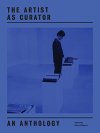
The Artist as Curator: An Anthology
Alexander Alberro
Taking that ambiguous thing we call “the exhibition” as a critical medium, artists have often radically rethought conventional forms of exhibition making. The Artist as Curator: An Anthology, born out of a series of essays originally published in Mousse, surveys seminal examples of such artist-curated exhibitions from the postwar to the present, examined by the world’s foremost curators and illustrated with rare documents and illustrations.
Artists featured include the Avant-Garde Argentinian Visual Artists Group; Mel Bochner; Marcel Broothaers; John Cage; Judy Chicago, Miriam Schapiro and the CalArts Feminist Art Program; Collaborative Projects Inc. (Colab); Liam Gillick and Philippe Parreno; Group Material; Richard Hamilton and Victor Pasmore; David Hammons; Martin Kippenberger; Mark Leckey; Hélio Oiticica; Walid Raad and Akram Zaatari; Martha Rosler; and Andy Warhol, among other examples drawn from around the globe.
-

Apple
Ken Miki
With Apple, Ken Miki playfully presents a complete basic course in visual communication ― all based on a simple and familiar object: the apple. First, all five senses are activated in a step-by-step analysis of the apple by touching, looking at, smelling, tasting and listening to the sound of eating it. The apple is then used to illustrate the topics of form, color, size, surface, texture, writing, line, body and text ― the fundamental elements a designer works with. Addressing each theme based on this everyday object enables a playful approach that also makes for highly effective learning. A unique textbook that offers inspiration and food for thought for both experienced graphic artists and those less familiar with the world of design.
-
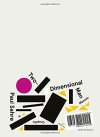
Two-Dimensional Man
Inc. Paul Sahre
In Two-Dimensional Man, Paul Sahre shares deeply revealing stories that serve as the unlikely inspiration behind his extraordinary thirty-year design career. Sahre explores his mostly vain attempts to escape his “suburban Addams Family” upbringing and the death of his elephant-trainer brother. He also wrestles with the cosmic implications involved in operating a scanner, explains the disappearance of ice machines, analyzes a disastrous meeting with Steely Dan, and laments the typos, sunsets, and poor color choices that have shaped his work and point of view. Two-Dimensional Man portrays the designer’s life as one of constant questioning, inventing, failing, dreaming, and ultimately making.
-

The Common Good
Robert B. Reich
From the best-selling author of Saving Capitalism and The Work of Nations, a passionate, clear-eyed manifesto on why we must restore the idea of the common good to the center of our economics and politics.
With the warmth and lucidity that have made him one of our most important public voices, Robert B. Reich makes the case for a generous, inclusive understanding of the American project, centering on the moral obligations of citizenship. Rooting his argument in everyday reality and common sense, Reich demonstrates the existence of a common good, and argues that it is this that defines a society or a nation. Societies and nations undergo virtuous cycles that reinforce and build the common good, as well as vicious cycles that undermine it. Over the course of the past five decades, Reich contends, America has been in a slowly accelerating vicious cycle–one that can and must be reversed. But first we need to weigh what really matters, and how we as a country should relate to honor, shame, patriotism, truth, and the meaning of leadership.
Powerful, urgent, and utterly vital, this is a heartfelt missive from one of our foremost political thinkers: a fundamental statement about the purpose of society and a cri de coeur to save America’s soul. -

Printer Prosthetic: Futura
Federico Perez Villoro
Printer Prosthetic: Futura is conceived as an “experimental reprint” of artist, publisher, and printer Hansjörg Mayer’s seminal Futura (1965–1968), a series of twenty-six artworks each published as a folded, single-page pamphlet. Using this collection of Concrete and Fluxus works as a starting point, Printer Prosthetic: Futura re-interprets the poems by means of mechanical mediation, outputting the originals through a set of controlled and chance operations.
-

Rich Media, Poor Democracy: Communication Politics in Dubious Times
Robert W. McChesney
First published to great acclaim in 2000, Rich Media, Poor Democracy is Robert W. McChesney’s magnum opus. Called a “rich, penetrating study” by Noam Chomsky, the book is a meticulously researched exposition of how U.S. media and communication empires are threatening effective democratic governance. What happens when a few conglomerates dominate all major aspects of mass media, from newspapers and magazines to radio and broadcast television? Since the publication of this prescient work, which won Harvard’s Goldsmith Book Prize and the Kappa Tau Alpha Research Award, the concentration of media power and the resultant “hypercommercialization of culture” has only intensified.
McChesney lays out his vision for what a truly democratic society might look like, offering compelling suggestions for how the media can be reformed as part of a broader program of democratic renewal. Rich Media, Poor Democracy remains as vital and insightful as ever and continues to serve as an important resource for researchers, students, and anyone who has a stake in the transformation of our digital commons.
This new edition includes a major new preface by McChesney, where he offers both a history of the transformation in media since the book first appeared; a sweeping account of the organized efforts to reform the media system; and the ongoing threats to our democracy as journalism has continued its sharp decline. -
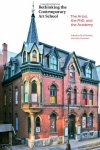
Rethinking the Contemporary Art School: The Artist, the PhD and the Academy
With great timeliness, Rethinking the Contemporary Art School examines the very basis of the art school and its role in society. The book considers various art-school models―innovative graduate programs, independent stand-alone schools and art schools that are departments or schools of major research universities―and the problems that art schools face as academically marginalized institutions. Rethinking the Contemporary Art School concludes with essays on new media, inquiring whether the contemporary art school offers the right context for this discipline. The anthology includes contributions by Su Baker, Bruce Barber, Mikkel Bogh, Juli Carson and Bruce Yonemoto, Edward Colless, Jay Coogan, Luc Courchesne, Sara Diamond, Lauren Ewing, Gary Pearson, Bill Seaman and Jeremy Welsh.
-

Art In Times Of Gray Democracy
Does art have the potential to stimulate and sustain political participation? On behalf of the Galerie für Zeitgenössische Kunst, Joanna Warsza invited the artists Alexandra Pirici, Pablo Helguera, and Ulf Aminde to Leipzig to try out three projects in public and semi-public spaces: Pirici staged a choreographic intervention at the Monument to the Battle of the Nations, Helguera an improvised speaking choir, and Aminde the dress rehearsal for an art strike. All the works were shown as part of the Performative Democracy series, whose title is taken from the book of the same name by Polish sociologist Elżbieta Matynia. It describes people as politically active creatures whose collective significance is derived from their actions. The publication Art in Times of Gray Democracy brings to a close the Performative Democracy series. It is produced in magazine format.
-

The Universal Penman
George Bickham
Very welcome … magnificent. - Graphis “A valuable addition for art directors.” - Advertising Age This is the only complete edition available of one of the most famous and most useful books of commercial art ever printed. George Bickham, a noted engraver and calligrapher, first compiled this work back in the 1740’s, from the best specimens of 24 of the leading calligraphers of his day. Unfortunately, Bickham published his work in 52 separate parts, over a period of eight years. In Bickham’s own day it was difficult to get a complete set of the Universal Penman; today, apart from this edition, it is virtually impossible, for most surviving 18th-century copies lack certain rare plates. This Dover edition, however, contains every plate which Bickham engraved, and each is reproduced from an original so remarkably clear that these modern plates are actually better than most 18th-century originals. This book contains more than 210 full-page plates, each crammed full of beautiful and interesting material. To list only part of its contents: • Over 125 pictorial scenes, clear copperplates of drinking scenes, family scenes, commerce, rustic festivities, duels, more. • Over 200 script pictures, male and female heads, busts, cherubs, griffins, birds, fish, etc. • 19 complete alphabets: round hand, round text, Old English, florid, foliated, and others. • 275 lettered specimens, overlaid with fine flourishes, swirls, spirals, featherings, volutes, etc. • Over 100 panels, frames, cartouches, and other effects Over 950 lettered specimens, with thousands of words that can be lifted right off for reproduction. Individual items in this book are permission-free, and may be used (up to ten items per use) without permission, payment, or credit line. Calligraphers find Bickham the best source for English round-handwriting; commercial artists, advertising directors, and designers all find Bickham first-rate as a source for immediately usable pictures and script that suggests antiquity
-
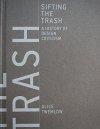
Sifting the Trash: A History of Design Criticism (MIT Press)
Alice Twemlow
How product design criticism has rescued some products from the trash and consigned others to the landfill.
Product design criticism operates at the very brink of the landfill site, salvaging some products with praise but consigning others to its depths through condemnation or indifference. When a designed product’s usefulness is past, the public happily discards it to make room for the next new thing. Criticism rarely deals with how a product might be used, or not used, over time; it is more likely to play the enabler, encouraging our addiction to consumption. With Sifting the Trash, Alice Twemlow offers an especially timely reexamination of the history of product design criticism through the metaphors and actualities of the product as imminent junk and the consumer as junkie.
Twemlow explores five key moments over the past sixty years of product design criticism. From the mid-1950s through the 1960s, for example, critics including Reyner Banham, Deborah Allen, and Richard Hamilton wrote about the ways people actually used design, and invented a new kind of criticism. At the 1970 International Design Conference in Aspen, environmental activists protested the design establishment’s lack of political engagement. In the 1980s, left-leaning cultural critics introduced ideology to British design criticism. In the 1990s, dueling London exhibits offered alternative views of contemporary design. And in the early 2000s, professional critics were challenged by energetic design bloggers. Through the years, Twemlow shows, critics either sifted the trash and assigned value or attempted to detect, diagnose, and treat the sickness of a consumer society.
-
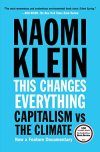
This Changes Everything: Capitalism vs. The Climate
Naomi Klein
The most important book yet from the author of the international bestseller *The Shock Doctrine, *a brilliant explanation of why the climate crisis challenges us to abandon the core “free market” ideology of our time, restructure the global economy, and remake our political systems.
In short, either we embrace radical change ourselves or radical changes will be visited upon our physical world. The status quo is no longer an option.
In *This Changes Everything *Naomi Klein argues that climate change isn’t just another issue to be neatly filed between taxes and health care. It’s an alarm that calls us to fix an economic system that is already failing us in many ways. Klein meticulously builds the case for how massively reducing our greenhouse emissions is our best chance to simultaneously reduce gaping inequalities, re-imagine our broken democracies, and rebuild our gutted local economies. She exposes the ideological desperation of the climate-change deniers, the messianic delusions of the would-be geoengineers, and the tragic defeatism of too many mainstream green initiatives. And she demonstrates precisely why the market has not—and cannot—fix the climate crisis but will instead make things worse, with ever more extreme and ecologically damaging extraction methods, accompanied by rampant disaster capitalism.
Klein argues that the changes to our relationship with nature and one another that are required to respond to the climate crisis humanely should not be viewed as grim penance, but rather as a kind of gift—a catalyst to transform broken economic and cultural priorities and to heal long-festering historical wounds. And she documents the inspiring movements that have already begun this process: communities that are not just refusing to be sites of further fossil fuel extraction but are building the next, regeneration-based economies right now.
Can we pull off these changes in time? Nothing is certain. Nothing except that climate change changes everything. And for a very brief time, the nature of that change is still up to us.